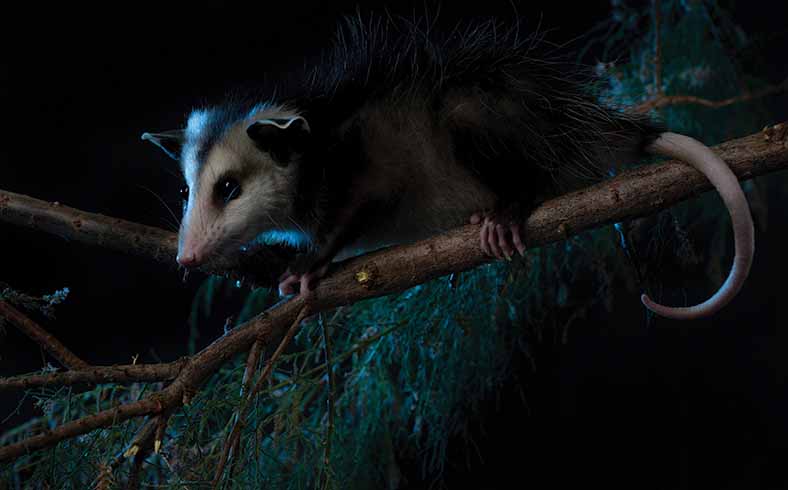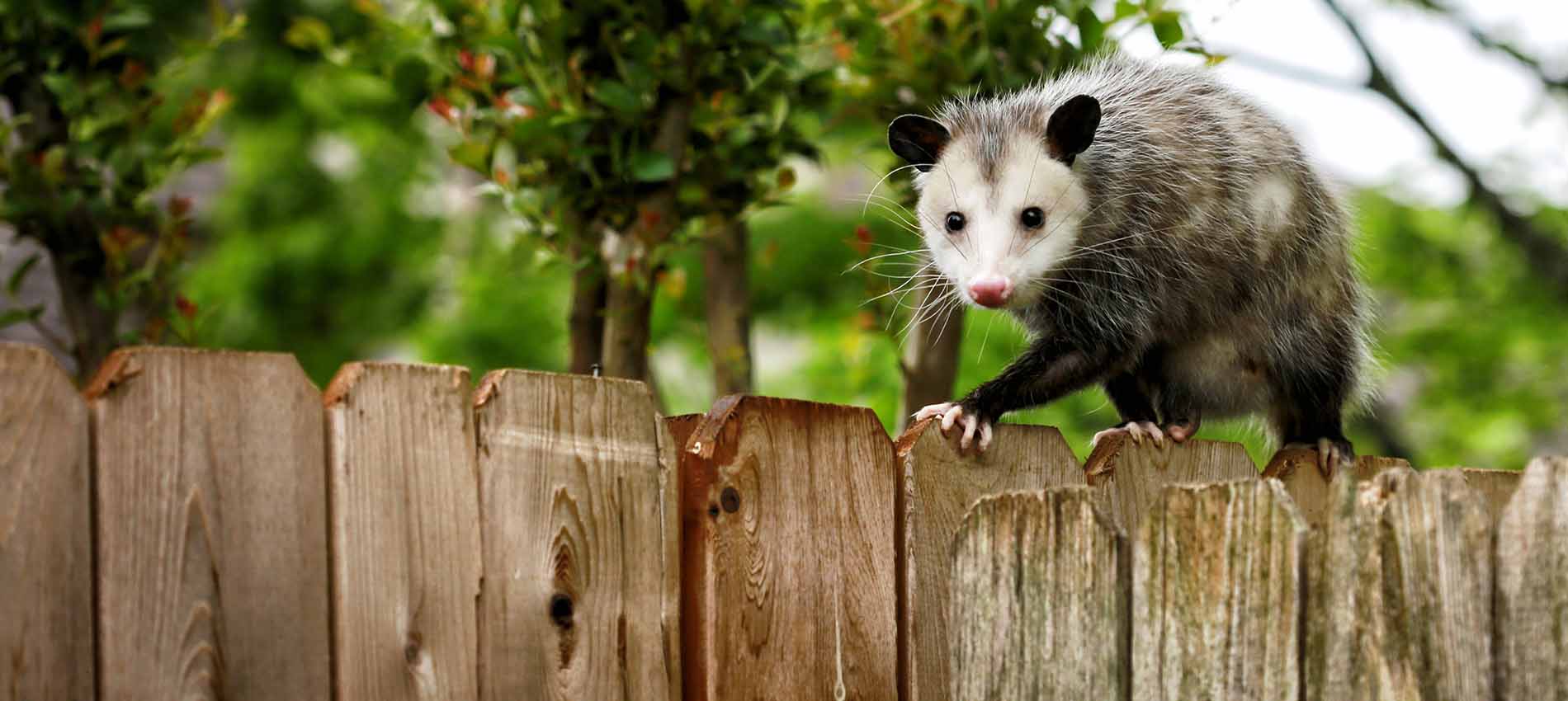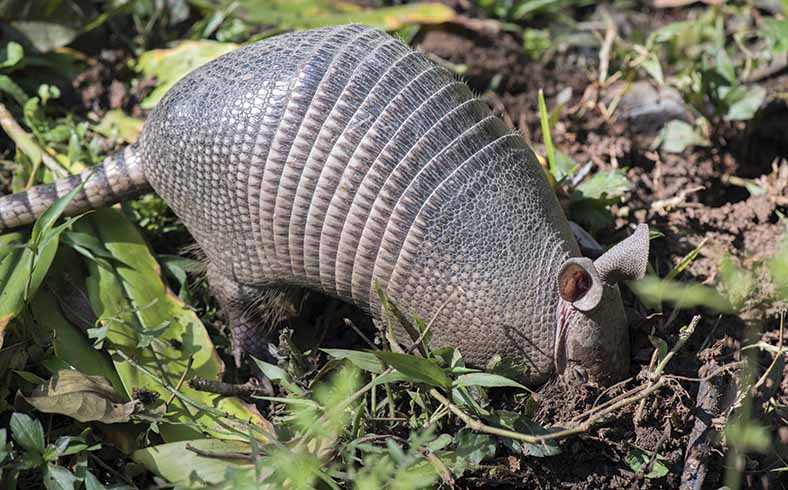When small mammals are discussed, the conversation usually turns to critters such as skunk, opossum and armadillo. Few people feel that these small mammals improve the country lifestyle, but before you load the shotgun or set the trap, let’s look at what these animals contribute.
Smelly skunk

Skunks are beneficial to man because of what they eat. Research studies show that half of the skunk’s year-round diet is insects and grubs. Delicacies are bees and wasps, as well as their larvae, honey, and nests.
Skunks are beautiful animals with black and white fur and bushy tails. Their beauty is the primary reason that people adopt them as pets—that is, after their two musk glands have been removed. Skunks are also hated and feared because of the possibility of it spraying a person or the pet dog with golden-yellow sulfide fluid known as butanethiol. In addition to the liquid’s nauseating smell, it burns and stings the skin. A direct hit in the face causes painful but temporary blindness and severe inflammation of the eyes, nose and mouth. Choking, coughing, some degree of nausea and possible fainting may result.
In most cases, getting sprayed by a skunk can be avoided. Skunks are normally gentle, non-aggressive creatures that only attack when cornered or defending their young. The best way to avoid a skunk’s spray is to leave the animal alone. When threatened, the skunk may give three warnings before actually spraying. First, it lowers its head, arches its back and lifts its tail except for the tip which remains limp. If the enemy doesn’t leave, the skunk then rapidly stomps its front feet. Finally it lifts the tip of the tail and prepares for battle. If surprised, however, the skunk shoots immediately without warning.
When a skunk is seen, stand as still as possible. As soon as the animal feels you are no threat, it will go about its business and you can quietly slip away without being sprayed. Another behavioral habit that increases the opportunity to avoid skunks is that they are nocturnal and often not seen during the day. Skunks do not hibernate, but tend to become inactive during the coldest winter months. Many gather in communal dens for warmth. For the remainder of the year, skunks are generally solitary.
An understanding of the skunk’s firing mechanism helps avoid unpleasant encounters with the animal. The sulfide is discharged from the glands though two tubes that are hidden within the rectum when not in use. As the tail is raised, these nozzle-like ducts stick out for service and can be shot separately in any direction at any height. You are not safe from the spray when the skunk’s rear is pointed in the other direction. Although it usually turns to fire, the animal can shoot to the right, left, front and back without turning around. It may also rear up on its front legs, as if doing a handstand and spray forward over its head.
The skunk is not defenseless after one shot. Each gland holds about one tablespoon of the thick, oily musk, and it can be released in controlled amounts to give the animal five or six shots from each gland. Once the supply runs out, the skunk needs several days to completely refill the musk sacs, but the glands become workable again in about a day.
Although the distance at which a skunk can hit its target varies, anything within 10 to 12 feet is usually in range. With a little help from wind, more distant targets can be hit. Young skunks are able to spray by the time they are seven weeks old and they won’t hesitate to let you have it.
Skunks are beneficial to man because of what they eat. Research studies show that half of the skunk’s year-round diet is insects and grubs. Delicacies are bees and wasps, as well as their larvae, honey and nests. Mice and other rodents comprise one-fourth of the diet and vegetable matter one-tenth. A mixture of spiders, reptiles, amphibians, birds and their eggs, millipedes and centipedes complete the menu.
The well-groomed opossum

The opossum’s biggest contribution to humans is their tick-control ability, which aids in Lyme disease prevention.
The appearance of the Virginia opossum doesn’t suggest that the animal is well-groomed. It has coarse grayish fur, a pointed face, hairless rounded ears and a long hairless tail. Their feet resemble small hands with five widely spread fingers. All of the toes have a claw except for the thumb on the rear foot. Regardless of the scrounge appearance, opossums are extraordinarily good groomers.
The Virginia opossum is North America’s only marsupial. A marsupial is an animal with a pouch, like a kangaroo or a koala. Females may have as many as 25 babies, but usually between seven and eight. The reason they have so many is to insure that some of them survive. Like most marsupials, opossums are very small when born—about the size of a navy bean.
Babies climb up their mother’s fur and into her pouch where they find a teat. Some of them don’t find their way to the pouch and die. If they make it to the pouch, only babies who find one of the 13 teats will survive. They will stay in the pouch and suckle for 55 to 60 days. Then they will move out of the pouch and spend another four to six weeks on their mother’s back.
When threatened, the opossum will run, growl, belch, urinate and even defecate. The animal exudes a repulsive, smelly, greenish musk like fluid from its anal glands, which offers some degree of protection from predators. Sometimes it will “play possum” by rolling over, becoming stiff and drooling. Its breathing will become slow and shallow. This coma-like state can last up to four hours.
In foraging, the nocturnal opossum feeds on fruits, nuts, green plants, insects, snails, snakes, frogs, birds and their eggs. It also consumes small mammals such as meadow voles, mice and rats. The animal eats both fresh meat and carrion and is often seen feeding on “road kill.” Opossums are immune to the sting of honeybees and scorpions, to toxins such as botulism and to the venom of rattlesnakes and other poisonous serpents.
The opossum’s biggest contribution to humans is their tick-control ability, which aids in Lyme disease prevention. Up to 200 ticks may try to feed on opossums at any one time, but only 3.5 percent survive the experience. Scientists at the Cary Institute of Ecosystem Studies in Millbrook, New York, calculated that a single opossum might kill an astonishing 4,000 ticks in a week. The fastidious opossums kill ticks through their grooming process—scratching, licking and chewing.
Armored armadillo
Consider the armadillo’s contributions to medical research. They almost always give birth to four babies—identical quadruplets. Identical littermates are great models for studying different drugs or medical treatments because any observed differences are likely due to the experimental treatment instead of genetic variations.
Approximately 20 species of armadillos exist, but the nine-banded is the only one found in the United States. The name, “armadillo,” means “little armored one” and refers to the animal’s bony, armor-like plates covering its body. Despite their name, nine-banded armadillos can have 7 to 11 bands on their armor.
The armadillo’s diet consists of beetles, cockroaches, wasps, yellow jackets, fire ants, scorpions, spiders, snails, and white grubs. A lesser part of the diet is comprised of small reptiles, amphibians, small mammals, and bird eggs. Less than 10 percent of of the diet is from fruit, seeds, fungi and other plant matter.
Armadillos burrow into fire ant colonies searching for food such as the brood or worker ants. Although they can reduce fire ant populations, they will not eliminate a colony because they don’t eat the queens.
Another benefit to mankind is the armadillo’s contributions to medical research. They almost always give birth to four babies—identical quadruplets. Identical littermates are great models for studying different drugs or medical treatments because any observed differences are likely due to the experimental treatment instead of genetic variations.
An interesting fact is that small streams are no obstacle for the nine-banded armadillo. They can hold their breath for up to six minutes and can swim or walk along the bottom of rivers. Nine-banded armadillos have a tendency to jump straight up into the air when startled, which often leads to their demise on highways.
Armadillos have long been a source of food for humans. The nine-banded was nicknamed “hoover hog” and “poor man’s pork” by people who blamed President Hoover for the Great Depression.
As with most natural organisms, the skunk, opossum and armadillo have a beneficial place in rural ecosystems. They eat insects that invade our home, damage our lawn and other green plants, and bite or sting our family members. They also eat poisonous snakes and rodents such as rats and mice. The skunk specializes in wasp and bee control, the opossum excels in lowering our exposure to ticks and the armadillo reduces fire ant populations. Unless these animals become overpopulated or cause excessive damage, it is wise to leave them alone. If they do become a nuisance, a trap should be used rather than a gun. Trapping and transporting allows the animal to continue its good work in another area.



